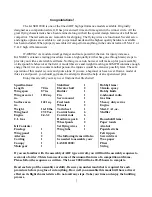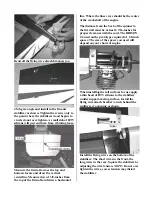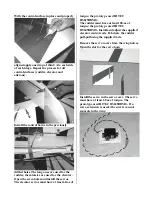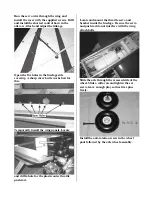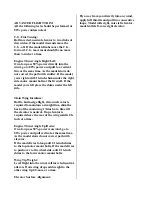
Congratulations!
The LASER 2000 is one of the finest ARF high performance models available. Originally
designed as a competition aircraft, It has proven itself time and time again in the winner circle. All the
great flying characteristics have been retained, along with all the special design features of a full bread
competitor. The tail surfaces are removable for shipping. The flying wires are functional. Several servo
and engine options are available to suit you personal needs and the highest quality hardware available
has been included. When properly assembled if can perform anything in the current realm of I.M.A.C or
T.O.C high Alfa maneuvers.
WARNING!
As model aircraft get larger and more powerful, the risk for injury increases.
KANGKE’s extensive testing procedures insure a high quality kit that has gone through many steps to
provide you with a safe reliable airframe. Nothing we can do however will make up for poor assembly
or irresponsible behavior at the field. A model this size and weight traveling at 80 MPH contains enough
energy that if it were to contact another person, the injuries would be extensive possibly fatal. The safe
operation of this model is yours and yours alone. If you are a beginner or have never flown a model of
this size and power, you should
not
make the attempt without the help of an experienced pilot.
Enjoy this aircraft, you may never find one that flies better!
Specifications:
Length 70
in.
Wing span
87 in.
Wing area wet
1204 sq.
in.
Surface area
1421 sq.
in.
Weight 16-18
lbs.
Wing load
27-29 oz.
Engine 2.4-3.2
C.I. Gas
Kit Contents:
Fuselage
1
Wing panel
1
Ailerons 2
Cowling 1
Canopy 1
Main gear
1
Stabilizer
1
Elevator half
2
Rudder 1
Fin
1
Servo mount
1
Fuel tank
1
Wheels 2
Tail wheel
1
Control horns
6
Control rods
6
Hardware pack
1
Wheel pants
2
Set flying wires
1
Wing tube
1
The following items will also
be needed to assemble your
LASER 2000:
Hobby
Items:
30-min.
epoxy
Hobby
Knife
4-6channel radio
Gas
line
5 heavy duty servos
Engine
Med. CA 1-oz.
Muffler
Household Items:
Paper towels
Alcohol
Popsicle sticks
Felt tip pen
Screwdrivers
Wax paper
Pliers
String
If you are familiar with the assembly of ARF type aircraft, you will find the assembly sequence to
seem out of order. This is because of some of the unusual features of a competition airframe.
Please follow the sequence as written. The Laser 2000 will take 20-25 hours to complete.
Read each step of the assembly carefully. Be sure you understand what is required for each
procedure before you glue of cut anything. How well you assemble this model will have a direct
effect on its flight characteristics. Do not omit any steps. Take your time and enjoy the building
process.


